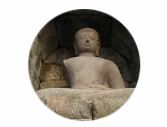Wal-Mart Stores, Inc (NYSE:WMT) has been going native to compete in the Chinese grocery market, already the world’s largest at $1.1 trillion a year and expected to grow to $1.5 trillion in sales in just the next four years. A lengthy AP article details how Wal-Mart has learned over the years from its international missteps.
When Wal-Mart first came to China, it was slow to tailor its offerings to local tastes while later on, they gave local managers more leeway to run their businesses. However, that backfired – leading to a series of high profile food-safety violations.
In response, Wal-Mart slashed nearly two-thirds of its 20,000 suppliers. Now, the company knows exactly where each product comes from.
In the US where Company now accounts for 25% of the grocery business, it can force suppliers to do things the “Wal-Mart way.” In China, Wal-Mart accounts for just 2.3% of the grocery market with 95% of all products they sell being supplied by local companies.
The Chinese supply chain is also notoriously inefficient. Three years ago, the Company decided to cut out the middlemen and route as many goods as possible through 20 of its own distribution centers. This resulted in cost savings of as much as 20% or more.
Wal-Mart also had a difficult time promoting “everyday low prices” in China as some rivals poached the message. In 2012, it introduced “Worry Free” — implying quality and reassuring shoppers who worry that deals will expire before they get to the store.
A video accompanying the AP article on Yahoo! Finance talked about the Company’s critical eCommerce initiaitves in China and it was noted that Chinese consumers are buying around half a trillion worth of groceries online verses $300B for American consumers.
Finally, its worth mentioning that Bryan Roberts of the London retail consultancy TCC Global, was quoted by AP as saying: “Wal-Mart is a very determined organization.”
To read the whole article, Wal-Mart seeks overseas success by going native in China, go to the website of Yahoo! Finance. In addition, check out our China closed-end fund list and China ETF list pages.
Similar Posts:
- US-Chinese Business Partnerships Are Thriving (Kraneshares)
- China Has $67 Trillion in Potential Consumer Spending Over the Next 10 Years (Nielsen)
- China Loses #2 Creditor Rank to Germany (Bloomberg)
- eCommerce Grows Among Rural Chinese & Easterners (Nielsen)
- China’s Mutual Funds Industry Now the Second Biggest in Asia (The Asset)
- CMBI China and Hong Kong Equity Research (June 2023)
- Luckin Coffee is Launching in Singapore, Will it Do Well? (Momentum Asia)
- Inside the US Campaign to Cut China Out of the Tech Supply Chain (Nikkei Asia)
- ZJLD Group (HKG: 6979): IPO of the First Baijiu Maker to List Outside of China Flops
- Brutal Competition Batters Supermarket Stocks the World Over (The Guardian)
- CMBI Research China & Hong Kong Stock Picks (October 2023)
- Macro Tailwinds That Could Propel China’s Internet Sector (KraneShares)
- CMBI Research China & Hong Kong Stock Picks (September 2023)
- Vietnamese Verses Chinese Retail Investors (AFC)
- Five Misconceptions About China’s Stock Markets (KraneShares)
